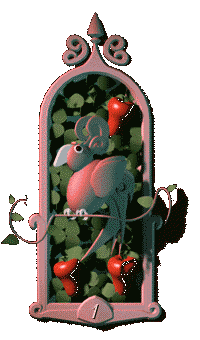 “On the first day of Christmas, my true love gave to me, a partridge in a pear tree.”
“On the first day of Christmas, my true love gave to me, a partridge in a pear tree.”The period known as Christmastide begins with the Feast of the Nativity itself; specifically, with the evening of this first day, through the morning of the Feast of the Epiphany. And so the first day of Christmas is December 25-26, and the season ends with Twelfth Night on January 5-6.
By tomorrow, you will stop hearing Christmas music on some radio stations, but around Chez Alexandre, whether here or on the road, as well as here at man with black hat, the Christmas season is just beginning. Most of us are familiar with the song "The Twelve Days of Christmas," and the significance of the symbolism therein. But for those who are not...
Twelve Drummers Drumming refers to the twelve points of doctrine in the Apostle's Creed
Eleven Pipers Piping refers to the eleven faithful apostles
Ten Lords A-leaping refers to the ten commandments
Nine Ladies Dancing refers to the nine Fruits of the Holy Spirit
Eight Maids A-milking refers to the eight beatitudes
Seven Swans A-swimming refers to the seven gifts of the Holy Spirit, and/or the seven sacraments
Six Geese A-laying refers to the six days of creation
Five Golden Rings refers to the first Five Books of the Old Testament, the "Pentateuch", which gives the history of man's fall from grace.
Four Calling Birds refers to the Four Gospels and/or the Four Evangelists.
Three French Hens refers to Faith, Hope and Charity, the Theological Virtues.
Two Turtle Doves refers to the Old and New Testaments.
One Partridge in a Pear Tree refers to Christ on Earth being crucified upon a tree.
True Love refers to God, who sent his only son to us.
[NOTA BENE: The use of this song as a "secret catechism" for children, employed by Catholics persecuted in post-Reformation England, is a matter of some dispute, as pointed out in this article from Snopes.com. Leave it to them to bring the party down.]
 Now then (and this should be a treat for those of you new to us), we present the continuation of a venerable man with black hat tradition.
Now then (and this should be a treat for those of you new to us), we present the continuation of a venerable man with black hat tradition.Since 1984, the cumulative costs of the aforementioned items have been used as a tongue-in-cheek economic indicator. This custom began with and is maintained by PNC Bank. Two pricing charts are created, referred to as the "Christmas Price Index" and "The True Cost of Christmas." The former is an index of the current costs of one set of each of the gifts given by the True Love to the singer of the song "The Twelve Days of Christmas." The latter is the cumulative cost of all the gifts with the repetitions listed in the song. The people mentioned in the song are hired, not purchased.
The project was the brainchild of Jim Dunigan, managing executive of investments with PNC Wealth Management. Each year this project gives us the lowdown on last year's CPI, including a brief history, the impact of the economy on this year's results, and how the PNC CPI can be used in the classroom. The original 1984 cost was $12,623.10. The total costs of all goods and services for the 2014 Christmas Price Index is , up 0.6 percent from $33,933.22 last year, compared to being up 1.0 percent from 2013 to 2014, so things just keep looking ... up, don't they?
Learn the details, including which items went up, down, or stayed the same in cost, by visiting pncchristmaspriceindex.com to see the whole dog-and-pony show for yourself, (or you can read this piece in Business Insider).
 And on that promising note, don't you have anything better to do on a day like this? Your friends as well as your "friends" are waiting on Facebook and Pinterest.
And on that promising note, don't you have anything better to do on a day like this? Your friends as well as your "friends" are waiting on Facebook and Pinterest.Go forth and spread joy!
(Animated illustrations for the Twelve Days of Christmas are courtesy of the Christian Resource Institute, under the authorship of Dennis Bratcher, and which are used here without permission or shame.)
No comments:
Post a Comment